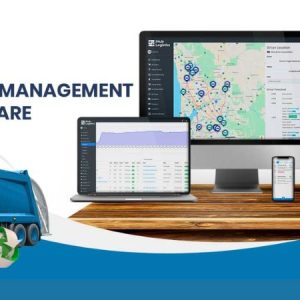To answer this question, one must start from the basics and understand what the term ‘security posture’ means. An enterprise’s security posture refers to its overall cybersecurity preparedness in terms of how it is able to predict, manage and mitigate security threats. Seen as a measure of the collective strength of an organization’s entire technology stack, it encompasses network security, information security, data security, vulnerability management and risk management to protect the organization’s software, hardware, network and services against security threats, malware infiltration and data exfiltration.
Enterprise SaaS Security Posture
A strong security posture for sanctioned SaaS apps consists of proper configurations and protection from misconfigurations that could leak sensitive data. Although the explosion of SaaS apps has dramatically improved productivity and business agility, it has opened up new avenues for data breaches and exposures, making SaaS Security Posture Management (SSPM) fundamental to every organization’s SaaS security strategy.
Securely configuring thousands of settings across hundreds of sanctioned SaaS apps is not an easy task. What’s more, finding security misconfigurations – and keeping them fixed – is even harder.
What Is SaaS Security Posture Management (SSPM)?
According to Gartner, SSPM is a “tool that continuously assesses the security risk and manages the security posture of SaaS applications.” At its core, SSPM provides security teams with a view into how sanctioned apps are configured. This allows them to identify settings that are misconfigured and ultimately help them enforce optimal configurations.
After performing a posture assessment of the SaaS app, an SSPM offers guided remediation for fixing misconfigured settings to bring security risks under control. Without SSPM, security admins are stuck with the time-consuming task of not only understanding how each app should be configured to align with company and compliance standards but also adjusting each SaaS application’s settings manually. What makes this laborious is the fact that it’s not a question of having to manage the configurations of a few apps. In today’s enterprises, the number of sanctioned apps runs into the hundreds. Each app is unique and consumed by multiple users across several departments, making it hard to properly configure.
Where Does SSPM Fit In with CASB?
Both cloud access security brokers (CASBs) and SSPM tools are designed to address security issues with SaaS applications. Traditionally, CASBs focused mainly on user access and data security policies but neglected the security of the app itself. Then SSPM became the “next big thing” in SaaS security. It was quickly absorbed into CASB to protect apps as well as mitigate the risks to the app and the data within by finding and fixing misconfigurations found in high-risk features or settings. Today, a fully featured CASB is considered incomplete without built-in posture security.
Serving as security policy enforcement points that sit between a cloud services provider and its users, CASBs help organizations discover where their data resides across multiple SaaS applications, cloud services environments, on-premises data centers and mobile workers. A CASB also enforces an organization’s security, governance and compliance policies, allowing authorized users to access and consume cloud applications while enabling organizations to effectively and consistently protect their sensitive data across multiple locations inside and outside of the network perimeter.
SSPM, on the other hand, serves as an ancillary to the enforcement capabilities of a CASB. Its primary purpose lies in its ability to evaluate SaaS applications for configuration errors. In doing so, SSPM guarantees that the SaaS app is congruent with security policies going beyond just compliance expectations. Furthermore, because SaaS apps are typically owned by IT teams, which often creates a disconnect between the business units and security teams, a gap in how each team manages configurations can cause a ‘drift’ from the ideal configurations. This results in the security teams often not having visibility into how the app is configured. If something changes, they don’t easily catch it because app audits are infrequent due to the 100s of apps that must be assessed. Here’s when an SSPM tool proves to be invaluable. It automatically and continuously monitors SaaS apps to prevent configuration drifts and address security hygiene issues that put users and data at risk.
Any cloud-enabled enterprise that depends on SaaS apps to conduct business needs SSPM to ensure its apps are properly configured before being operationalized. To learn more about how Palo Alto Networks is disrupting the SSPM space with cutting-edge SaaS security posture management, Visit us here.




